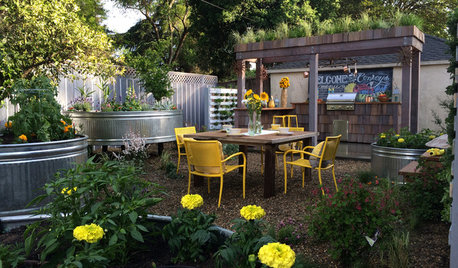What Can I Graft on Callery Pear?
RedSun (Zone 6, NJ)
9 years ago
Related Stories

EDIBLE GARDENSHow to Grow Your Own European and Asian Pears
Try these trees for their good looks, delicious fruit and wide range of sizes — plus you can espalier them
Full Story
GARDENING AND LANDSCAPINGCrazy for Fruit Trees
Whether a single citrus or a mini apple orchard, even the smallest landscape space can bear deliriously delicious fruit
Full Story
FARM YOUR YARDRemake Your Backyard Into a Mini Farm
You can get a taste of country life by line-drying your laundry, growing some produce or going whole hog with the critters
Full Story
EDIBLE GARDENSHow to Grow Your Own Peaches and Nectarines
Make gardening a little sweeter with these juicy fruits, which you can eat after plucking or preserve for later
Full Story
EDIBLE GARDENSHow to Grow 10 Favorite Fruit Trees at Home
Plant a mini orchard in fall, winter or early spring to enjoy fresh-off-the-tree fruit the following year
Full Story
FARM YOUR YARDIf You Have Room for Only One Fruit Tree ...
Juice up a small garden with one of these easier-care or worth-the-effort fruit trees for a mild climate
Full Story
EDIBLE GARDENSHow to Add an Apple Tree to Your Edible Garden
Readily available, beautiful and fragrant, apple trees offer four-season interest along with crisp, juicy fruit
Full Story
FALL GARDENING11 Trees for Brilliant Fall Color
Give your landscape the quintessential look of autumn with the red, orange and yellow leaves of these standouts
Full Story
GARDENING GUIDESVegetables and Flowers Mix in Beautiful Edible Gardens
Ornamentals, meet your edible garden mates. We know you'll get along just beautifully
Full Story
LANDSCAPE DESIGNPretty Trees for Patios, Paths and Other Tight Spots
Choose trees for their size, shape and rate of growth — or shape them to fit your space. Here's how to get started
Full StoryMore Discussions







2010champsbcs
RedSun (Zone 6, NJ)Original Author
Related Professionals
Wrentham Landscape Architects & Landscape Designers · Fort Lee Landscape Architects & Landscape Designers · Kyle Landscape Architects & Landscape Designers · Rancho Palos Verdes Landscape Architects & Landscape Designers · Vernon Hills Landscape Architects & Landscape Designers · West Chester Landscape Architects & Landscape Designers · Stamford Landscape Contractors · Berkley Landscape Contractors · Hicksville Landscape Contractors · Kahului Landscape Contractors · Las Vegas Landscape Contractors · Louisville Landscape Contractors · Middletown Landscape Contractors · Mission Bend Landscape Contractors · Peachtree City Landscape Contractors2010champsbcs
hairmetal4ever
RedSun (Zone 6, NJ)Original Author
2010champsbcs
clarkinks
cousinfloyd
clarkinks